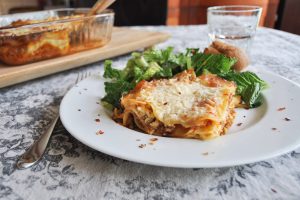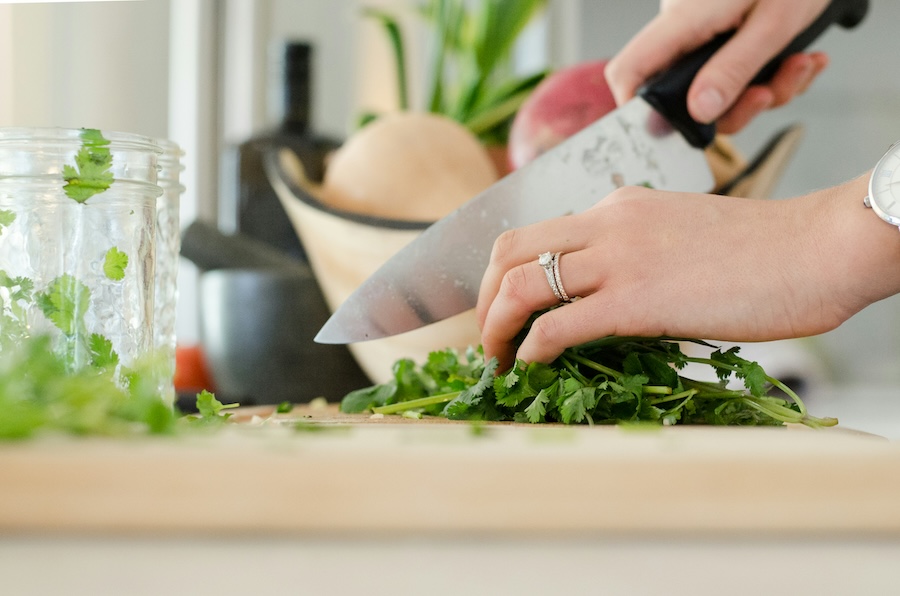Sugar is like reality TV. It’s everywhere, we know it’s (mostly) bad for us, and we have a love-hate relationship with it. Which explains why refined white sugar is quickly becoming public enemy number one, while the popularity of all natural sweeteners, like honey and maple syrup, is rising.
But let me be clear: Even the “best” white sugar substitutes are still a form of sugar, contain calories, and should be eaten in moderation. The difference is that these alternatives are available in their natural form and some even offer health benefits.
If the idea of a more natural form of sugar appeals to you, check out the following five options. And no matter what you choose, keep in mind something that I was once told by a nutritionist: The best sweetener is whichever one gives you your desired taste with the least amount. In other words: The less you use of any of these, the better.
Related: Getting started on Whole 30: 5 surprising things that happened the first week.

1. White sugar substitute: Honey
One of the oldest elixirs in the world, raw honey is loaded with antioxidants, minerals, as well as B vitamins. Just be sure that you don’t share honey — or anything that contains it — with children under 1-year-old, as it poses a risk of botulism for them.
* Choose raw honey over processed whenever you can, and use on fruit, yogurt, cheese, roasted squash, in teas — pretty much anything. Mixed with a little warm water or tea, honey has been known to soothe little throats in the middle of the night.
* Honey has about 64 calories per tablespoon — about the same as refined white sugar — but it doesn’t raise your blood sugar level as quickly as white sugar.
* When baking with honey, the amount will depend on the type of honey and how much liquid is in the overall recipe. I’ve found the 4 rules for swapping honey for sugar at The Kitchn a helpful guide.
2. White sugar substitute: Agave syrup
Agave nectar or syrup, as it’s often called, is made from the same agave plant that also brings us tequila. It is marketed as a healthy alternative to white sugar, though you should keep in mind that it is highly processed and has a very high level of fructose (by some accounts, more than what you’ll find in high fructose corn syrup). Though agave nectar doesn’t cause the same spike in blood sugar as white sugar, that much fructose may not be great for you.
Given the questions that have been raised about agave syrup, you may want to read more before using it regularly. I found this explanation of agave nectar at Rodale’s Organic Life helpful.
* Agave syrup is exceptionally sweet — even sweeter than regular sugar — so use it sparingly!
* Agave nectar has about 60 calories per tablespoon, more motivation to use just a little.
* Small amounts work well as a natural sweetener for coffee, tea, yogurt, or baked goods.
Related: 5 tricks to making a sweet smoothie without heaps of added sugar.
3. White sugar substitute: Maple syrup
Extracted from the sap of maple trees, this potent syrup is sweet, but also offers many nutritional benefits like zinc, iron, antioxidants, and fatty acids. Makes you feel a little better about pouring it over your kid’s morning waffle, right? Sure, as long as you go for the real thing.
* Be sure to look for all-natural maple syrup with a label that reads one thing, and one thing only: maple syrup. Generic pancake syrup is made from high fructose corn syrup and water.
* Real maple syrup has about 52 calories per tablespoon.
* You can easily use maple syrup as a replacement for sugar in granola, cocktails, marinades, and even tossed with chicken and vegetables, like in this recipe for Maple Mustard Roast Chicken. Trust me, your Brussels sprouts will thank you.
PRO TIP:
When baking with honey, maple syrup, or agave nectar, lower the oven temperature by 25 degrees to prevent over browning.
4. White sugar substitute: Dates
Dates have long been staples of mediterranean and middle-eastern cuisines, but are growing in popularity around the world thanks to Paleo and Paleo-like diets (we see you Whole30!). Also, parents like them because no other all natural bite will give your little ones a sweet fix quite like a soft, chewy date, particularly Medjool dates. Whether eaten fresh or dried, dates are full of fiber, vitamins, and minerals. They also make a great sugar substitute.
* Whole dates are easily blended — especially if you soak them in hot tap water for a few minutes — to make a sweet puree that can sweeten cakes, dressings, and marinades. But you should also look out for date syrup and date sugar, which are becoming more commonly available.
* One date contains about 20 calories.
* Hands down, the way that everyone should start using dates today, is to blend them into smoothies. If you ask me, it’s the number one suggestion on this list of ways to make a sweet smoothie without tons of added sugar. The 4-Ingredient Green Smoothie (pictured) at Pinch of Yum is a favorite in my house; I add a few frozen berries and my kids can’t get enough. Just remember to remove the pits if you can’t find pitted dates at the market.
5. White sugar substitute: Stevia
Stevia is a plant that contains naturally sweet leaves that can be ground up into a potent sweetener. The leaves are 200 to 300 times sweeter than sugar, and contain no calories. As in, zero. Just know that some people find natural stevia to have a bitter licorice-like aftertaste.
Truthfully, I debated on including stevia as a natural white sugar substitute, because unfortunately, most of the time, stevia is served in a processed, chemically-altered form (Truvia, PureVia, Stevia in the Raw, etc.). These additives may render the native South American plant more palatable, but the consequence is that it’s also now entirely unnatural.
But everything in moderation! If using, add a small amount to sweeten drinks, and if you’re looking to bake or cook with it, seek out specific cookbooks or websites dedicated to stevia, as the rules of engagement, so to speak, will depend on what type you use.







